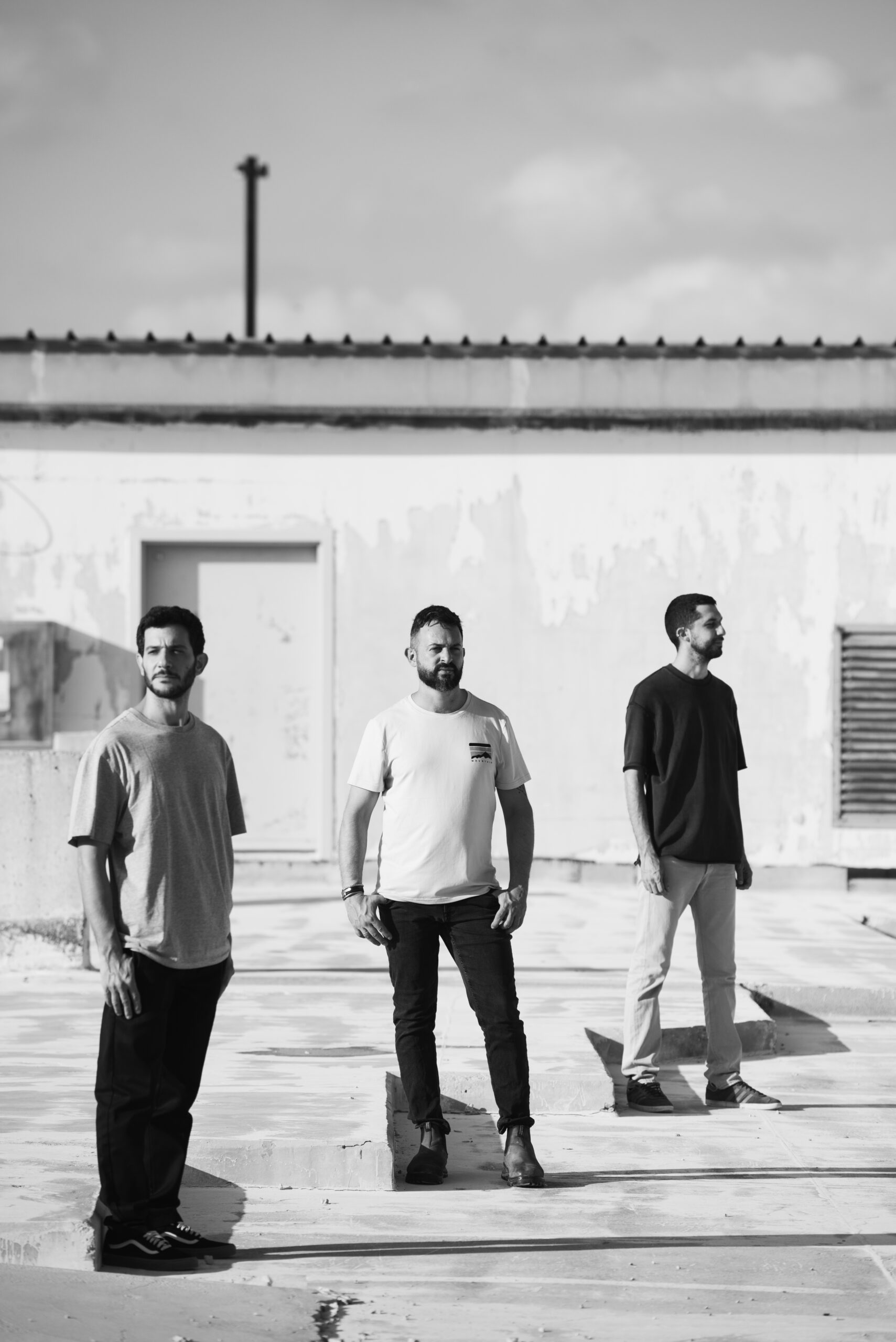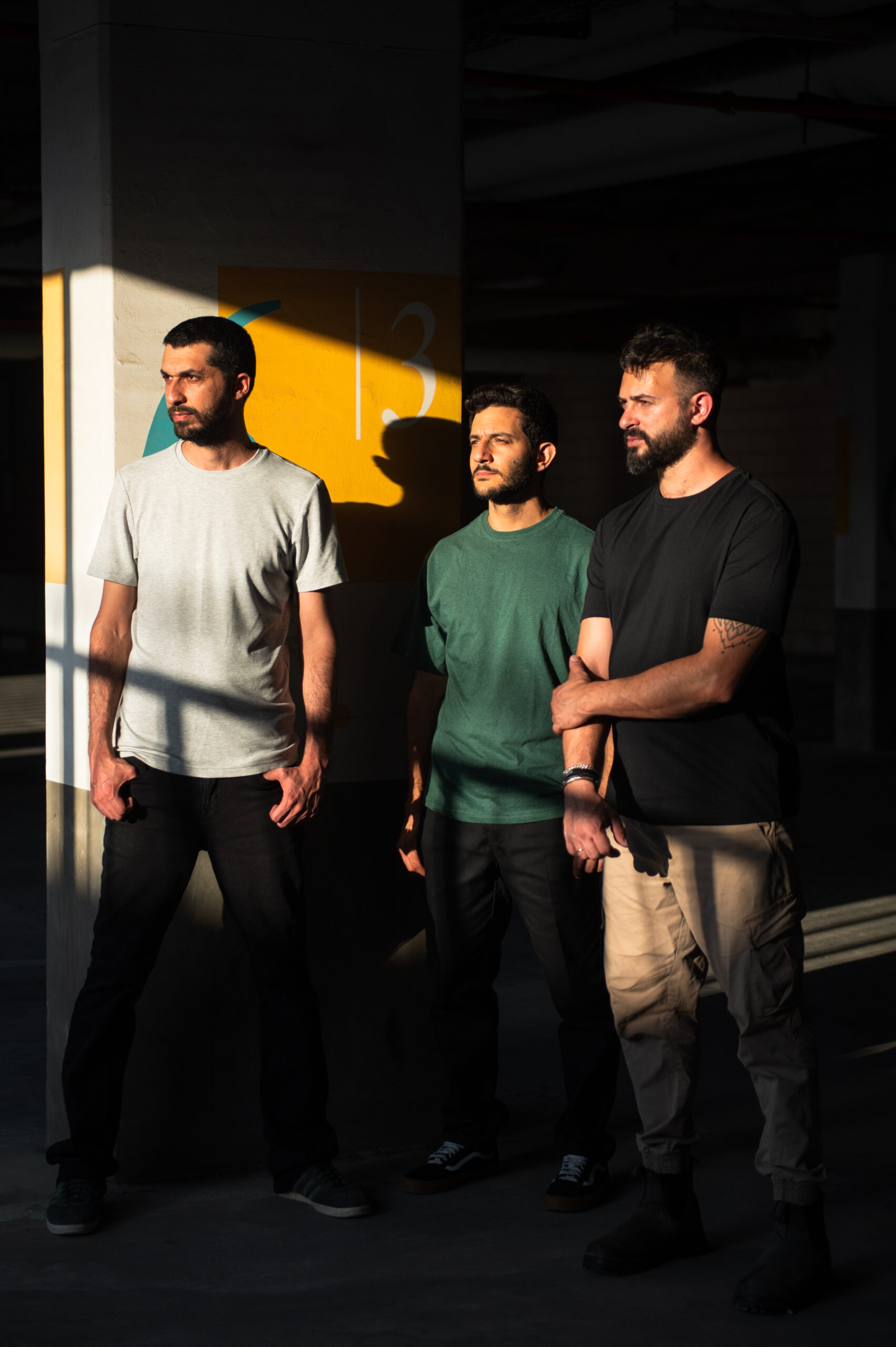Israeli post-rock trio Nest recently released their latest album, Kites, a collection of instrumental tracks that showcase their ability to combine atmosphere and emotion. In this interview, the band discusses the inspiration behind the album, their creative process as a trio, and their plans for the future.
Can you tell us about the inspiration behind the album Kites? What story or feeling were you hoping to convey?
For us, Kites represents exploration, rawness, and flow. It’s a diverse album, shaped by influences gathered over a relatively long creative process. This approach allowed us to freely experiment with a wide range of ideas and emotions. The tracks are more about evoking feelings than conveying specific themes, trusting listeners to connect with them in their own unique and subjective way. Our primary goal was to let listeners immerse themselves in the music, guiding their own journey without directing them toward a specific destination.
How does the dynamic of being an instrumental trio influence your creative process? Do you feel it gives you more freedom or presents unique challenges?
We think instrumental music has a unique ability to embrace abstraction, it has the power to evoke certain emotions that can be interpreted subjectively. As an instrumental trio, we focus on keeping our pieces minimalistic, which allows for clarity and expression. However, it’s a delicate balance—we aim to create movement and keep the music dynamic, avoiding the risk of stagnation or monotony. It’s a challenge, but one we feel is worth pursuing.
Post-rock often thrives on atmosphere and emotion. How do you approach building the complex soundscapes that define your sound?
As mentioned before, for Kites, we focused on a range of approaches. Some tracks, like “Phoenix” and “Structures,” evolve into more layered compositions to enhance the atmosphere, while others follow a more basic guitar-bass-drums formula. When possible, we prefer to build layers to enrich the sound, but ultimately, it depends on the specific track and its needs. We believe that the most powerful tracks are often those that can convey a strong message through a minimalistic approach, where each element—whether it’s a simple guitar line or bass groove—stands out clearly, yet the production remains subtle and restrained.
Actually, we are now working on two new EPs, which reflect this duality in different ways—one with a live Krautrock inspired vibe of monotony and improvisation, and another that embraces the post-rock aesthetic with meticulously layered guitars.
Your music moves seamlessly between serene interludes and powerful crescendos. How do you achieve such balance in your compositions?
We tend to follow what feels right in the moment, even if it makes a track more challenging or less conventional for some listeners. In tracks like Wildflower and Apex, the dynamic shifts felt intuitive to us. For example, the ending of Wildflower felt like a natural conclusion, complementing the track in a way that might surprise the listener, but it felt essential to how we wanted to finish the piece.

What role does improvisation play in your songwriting and live performances? Are there moments on Kites that came from spontaneous sessions?
Improvisation plays a major role in our music. Many of our compositions start from jams or small ideas we each bring to the table. Sometimes we can write an entire track like Lurk or Phoenix in just a few hours, but other times the tracks evolve into something else, even during the recording process. For instance, the guitar solos at the beginning of Structures were the first and only takes we recorded. During live shows, we also like to tweak things around and surprise each other, keeping the performance fresh and spontaneous.
The psychedelic twist in your music adds a distinct layer to the post-rock foundation. How did this fusion come about, and what draws you to psychedelic elements?
The psychedelic elements in our music are influenced by our broader inspirations. It acts as a form of abstraction, where certain parts feel vague yet somehow reachable at the same time. Often, it’s about conveying depth through subtle details. We aim to suggest things implicitly, hoping to strike a chord with listeners. Ultimately, we’re drawn to that subtlety and the hidden aspects that give our music its depth and resonance.
Can you walk us through the production of Kites? Were there any specific techniques or instruments that played a pivotal role?
The production of Kites was a dynamic process, shaped by our approach to sound and atmosphere. We focused on capturing the natural energy and spontaneity of our performances. As an instrumental trio, each instrument played a key role in defining the balance and flow of the album. We used minimal overdubs, favoring a raw and organic sound. We also embraced some experimentation, incorporating a Moog, other synthesizers, trumpets (played by the great Arthur Krasnobaev), and a section featuring two basses and no guitar to add variety and depth to the sound.
For us, when a track sits and waits for a recording, it can lose some of its freshness and energy, so tweaking and experimenting with “completed” tracks is something we tend to do. This process allows us to keep the music alive and evolving, even after we think a track is finished.
The album title, Kites, evokes imagery of freedom and movement. What does it symbolize for you as a band?
The imagery definitely evokes a sense of freedom and movement, but also the feeling of being tethered, of navigating between control and release. It reflects how we approach both our music and our creativity—allowing it to flow freely, yet with intention and purpose. The title symbolizes that balance between letting go and being anchored in the process. The idea for the name came from an Indian philosophy essay called Dark Mother Flying Kites, which explores themes of freedom and attachment. These themes resonated with us as they reflect the tensions between liberation and the ties that bind us.
The album cover was designed by a very talented friend of ours, Natalia Rozengard, who beautifully captured the exact feeling we were trying to convey, complementing the album’s themes visually.
Who or what are some of your key influences, both musically and non-musically, that shape your sound?
Our influences are really diverse, and each of us brings different musical tastes to the table. Musically, we draw inspiration from bands like Tortoise, Radiohead, Stereolab, and Neu!, who have all played significant roles in shaping our approach to texture, structure, and atmosphere. These groups have a unique way of blending different styles, and we admire how they use minimalism, experimentation, and intricate arrangements to create something timeless. We’re also inspired by classical music, jazz, and other experimental genres, which give us a broader perspective on sound and composition.
Post-rock is often described as deeply introspective. How do you hope listeners connect with your music on a personal or emotional level?
We believe that if our music can evoke any kind of emotion in the listener, whether it’s something uplifting or even something more challenging or unsettling, we’ve accomplished our goal. It’s about creating a moment of engagement. We often receive completely different feedback for the same track, with each listener taking something unique from it. Our aim is to create a space where people can feel something deeply, whatever that may be, and hopefully reflect on it.
How does the Israeli music scene influence your work? Are there local elements or experiences that have shaped your sound or approach?
The Israeli music scene is vibrant and diverse, with many talented artists working in a variety of genres. There’s a lot of originality here, and several acts have developed their own unique approaches to creating music. We’re also inspired by the growing presence of instrumental bands, which adds a lot to the local creative energy. Ultimately, we believe that music is shaped by its surroundings, and while there may not always be a direct connection to Middle Eastern culture in our sound, the environment itself definitely influences the way we approach our music.

What’s next for Nest after Kites? Are there any plans for tours, new projects, or collaborations in the near future?
As mentioned earlier, we’re currently working on two new EPs, each with its own unique direction. One will have a raw, improvisational vibe, capturing the energy of live sessions and spontaneous moments, while the other will lean more into a polished, post-rock aesthetic with carefully crafted layers and production. We’re really excited to explore these different facets of our sound. On top of that, we’re in the process of planning live shows, which will be announced soon. We’re looking forward to bringing Kites and new material to audiences, and overall, there’s a lot of exciting developments on the horizon that we can’t wait to share!

